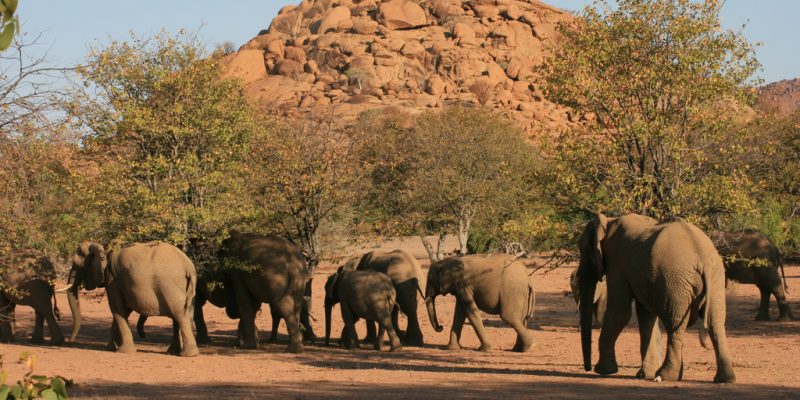The Namibian Ministry of Environment, Forestry and Tourism has launched a new programme to preserve Namibia's protected areas. Its implementation will require an investment of more than US$12 million (N$208 million).
“Between the end of 2018 and May 2020, more than 1,790 suspected poachers were arrested in Namibia,” said Pohamba Shifeta, Namibia’s minister of environment, forestry and tourism, in a report published in June 2020. “The number of suspects arrested has doubled since the anti-poaching unit was launched in the country in 2016,” he said. Among the species most affected by poaching are rhinos and elephants. “In 2019, 45 rhinos were poached compared to 74 in 2018, 55 in 2017, 61 in 2016 and 97 in 2015. In 2020, there are two rhinos already poached. For elephants, 12 were poached in 2019, 27 in 2018, 50 in 2017, 101 in 2016 and 49 in 2015. No elephants have yet been poached in 2020,” says Pohamba Shifeta.
These latest statistics published by the Namibian Environment Authority thus reveal how far wildlife conservation has progressed in the country. According to Pohamba Shifeta, much remains to be done.
It is on the strength of this observation that the Namibian Ministry of Environment, Forestry and Tourism has decided to set up a response programme worth more than 12 million US dollars (N$208 million), or 36% of the budget of the Namibian Ministry of Environment, for the year 2020. The new programme will also take into account the preservation of the country’s protected areas.
The Wildlife and Protected Areas Conservation Programme includes several strategic interventions. These include wildlife crime prevention and law enforcement. This will be done through the strengthening of surveillance, patrols and detection, as well as through the conduct of appropriate investigations and intelligence. The second intervention concerns support to communal conservatories and community forests. Local communities will also be supported through promising mitigation measures in areas of high animal population concentration. These include the installation of predator-proof kraals (cattle enclosures), protective walls around water infrastructure, alternative grain storage facilities and the installation of watering troughs for elephants.
Namibia’s new wildlife and protected areas conservation programme also includes the prevention and mitigation of human-wildlife conflicts, including the culling of problem animals and financial assistance to communities through the “Namibia Human-Wildlife Conflict Self-Sufficiency Programme”.
“The main objectives and outcomes of the wildlife and protected areas conservation programme will be to increase the income generated for communities from wildlife and forest products, strengthen governance in conservation and community forests, create more employment for rural communities and provide rural communities with game meat for household consumption,” explains Pohamba Shifeta.
Inès Magoum







